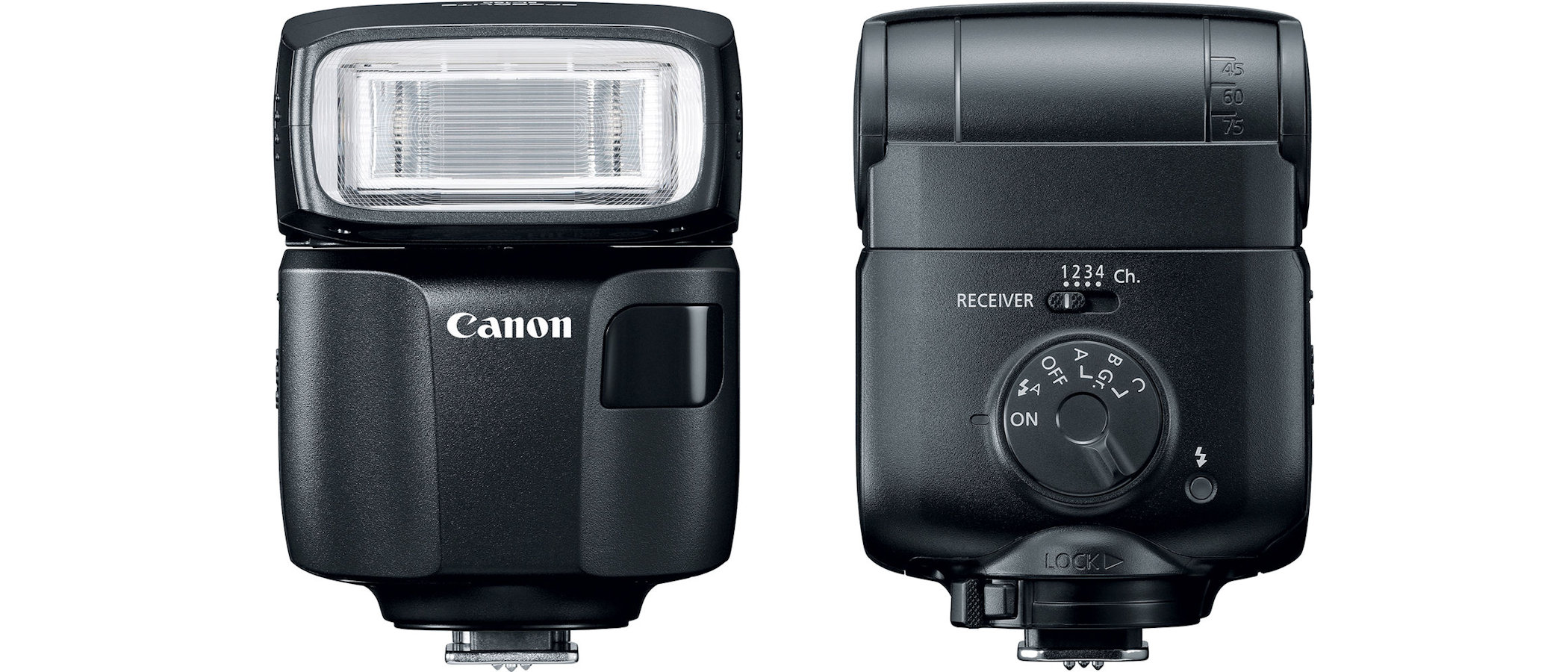Digital Camera World Verdict
When smaller is better, this Canon Speedlite is particularly travel friendly. It’s pretty basic, with very sparce onboard controls and no display screen, but upsides include a bounce and swivel head, optical master/slave modes for wireless triggering, and even a programmable stroboscopic flash mode, which is unusual for a camera manufacturer’s own-brand flashgun at this price point.
Pros
- +
Small and lightweight
- +
Optical master/slave functions
- +
Programmable stroboscopic mode
Cons
- -
Rudimentary 2-position manual zoom
- -
Limited maximum power output
- -
Basic controls, no display screen
Why you can trust Digital Camera World
The Canon Speedlite EL-100 is just about small enough to slip into a pocket, but it’s significantly more powerful than a pop-up flash. And for full-frame cameras that don’t have a pop-up flash, it makes a handy space-saving add-on, weighing in at just 190g.
Specifications
Dedication: Canon
Gn, ISO 100, max zoom (m / ft): Gn 26 / 85
Bounce range: 0 to 90 degrees
Swivel, left / right: 150 / 180 degrees
Zoom Range: 24mm & 50mm
Manual Power Settings: 1/1 to 1/128
AF-assist beam: Red lamp
Wireless: Optical master / slave
Additional Flash Modes: HSS, RC, SS, Strobe
Dimensions (W x H x D): 64.6 x 91.7 x 71 mm
Weight (excl batteries): 190g
Key features
Although compact, the EL-100 features a bounce head, with 0-90 degrees of vertical movement, and 150/180 degrees of swivel to the left and right respectively. However, there’s no motorized zoom mechanism that can track the focal length of a camera’s attached lens. Instead a rudimentary push-pull manual adjustment gives alternatives to match focal lengths of 24mm or 50mm focal lengths (38mm or 80mm for APS-C).
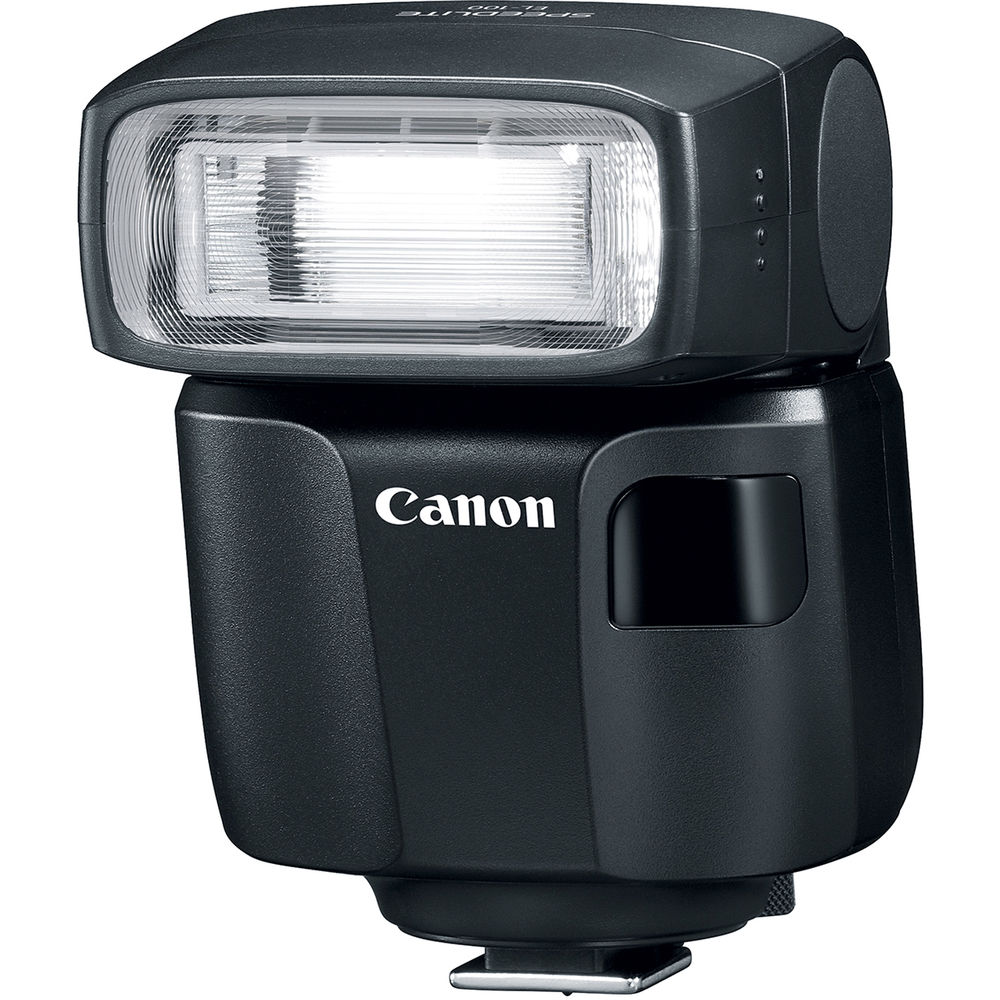
There’s no wide-angle diffuser nor a pull-out reflector card built into the head, but the flashgun does come with a carrying pouch and stand. Wireless connectivity includes both master and slave infrared modes, whereas the pricier Canon Speedlite 470EX-AI only features an IR slave mode. Even so, there’s no RF connectivity, like in the Speedlite 430EX III-RT.
Onboard controls are perhaps too straightforward, only really catering to channel and group assignments for wireless modes, and there’s no LCD screen. Instead, you need to make all adjustments via in-camera menus, which can be relatively long-winded.
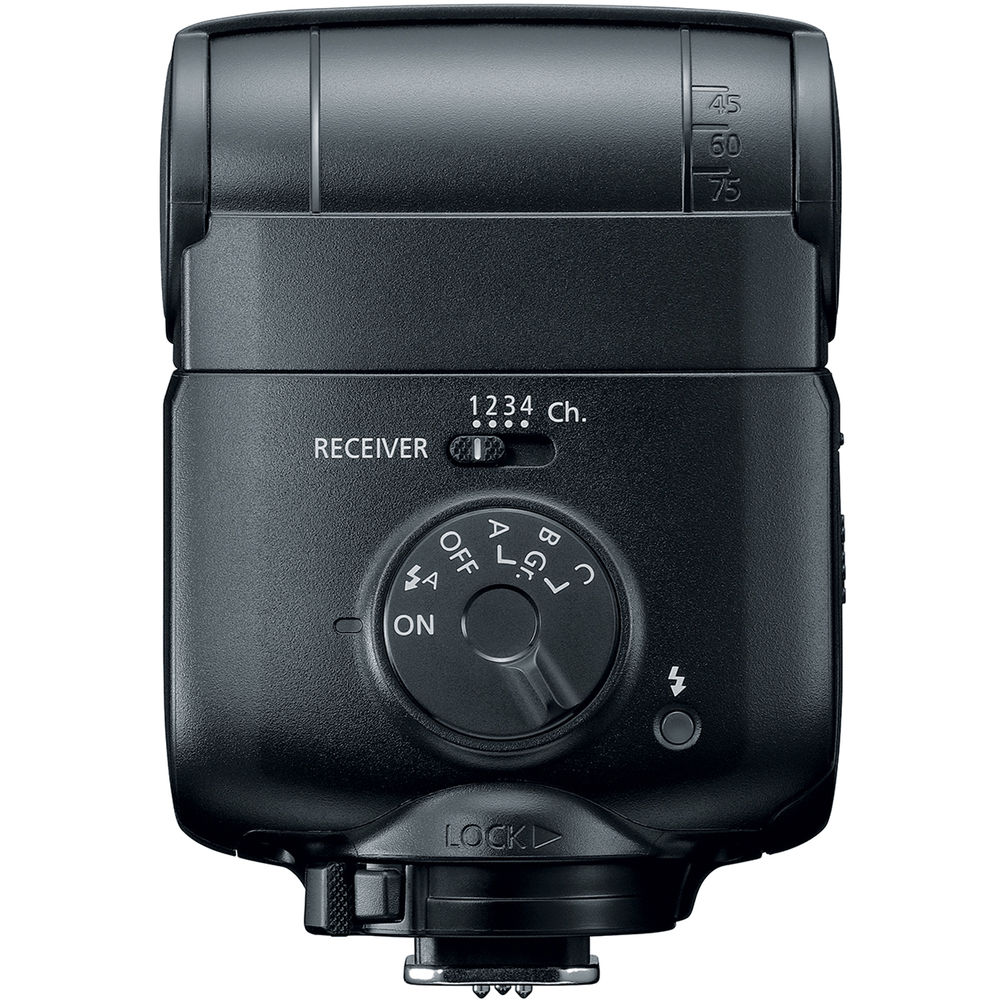
The rotary control dial includes full ‘Auto’ and a more adjustment-friendly ‘On’ position, as well as three group assignments for multi-flashgun setups. A switch above the rotary dial gives the option of four different transmission channels. High-speed sync and rear-curtain sync are supported, and there’s even a programmable stroboscopic mode, enabling you to fire a sequence of flashes during a long exposure.
Performance
As indicated by the modest Gn rating, maximum power output is pretty modest, as is the zoom range. Considering that the EL-100 only runs on two AA batteries, recycling isn’t particularly slow, at 3 seconds after a full-power flash when using NiMH batteries. However, this slows noticeably to 5.2 seconds when using alkaline cells. TTL flash metering is spot-on.
Lab results
We test all available features for each flashgun that goes through out labs. To test power output, we used a Sekonic flash meter placed at a distance of one meter from each flashgun. We check the complete range of manual power settings, in one-stop increments. Based on a sensitivity of ISO 100, the figures correlate directly with the Gn (Guide number). The results are double-checked by taking shots of a gray card with the appropriate lens apertures and using the camera’s histogram display in playback mode. This is done for flash zoom settings of 24mm, 50mm and 105mm (in full-frame terms), where available.
We also check the accuracy and consistency of electronic/intelligent TTL (Through The Lens) flash metering, and the speed with which each flashgun can recycle to a state of readiness after a full-power flash, using both Ni-MH and alkaline cells, or a Li-ion power pack where supplied.
Power output:
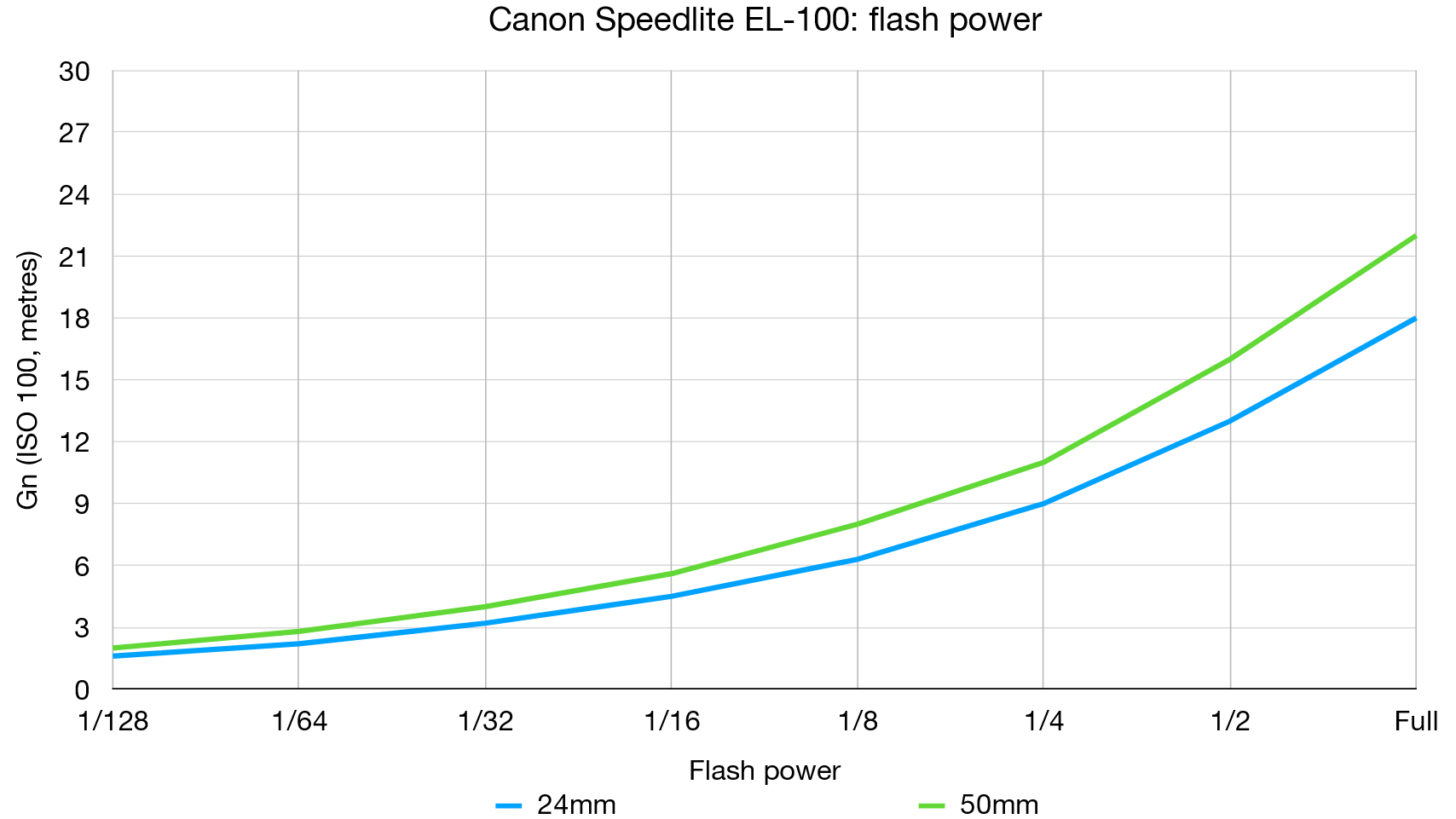
Compared with most Speedlites in Canon’s range, the EL-100 is fairly limited in maximum power, recording a value of Gn 22 (meters, ISO 100) at its longer 50mm zoom setting in our tests.
TTL accuracy (+/-EV): 0
The accuracy and consistency of TTL flash metering tends to be very good with Canon Speedlites, and the EL-100 is no exception.
Recycling speed:
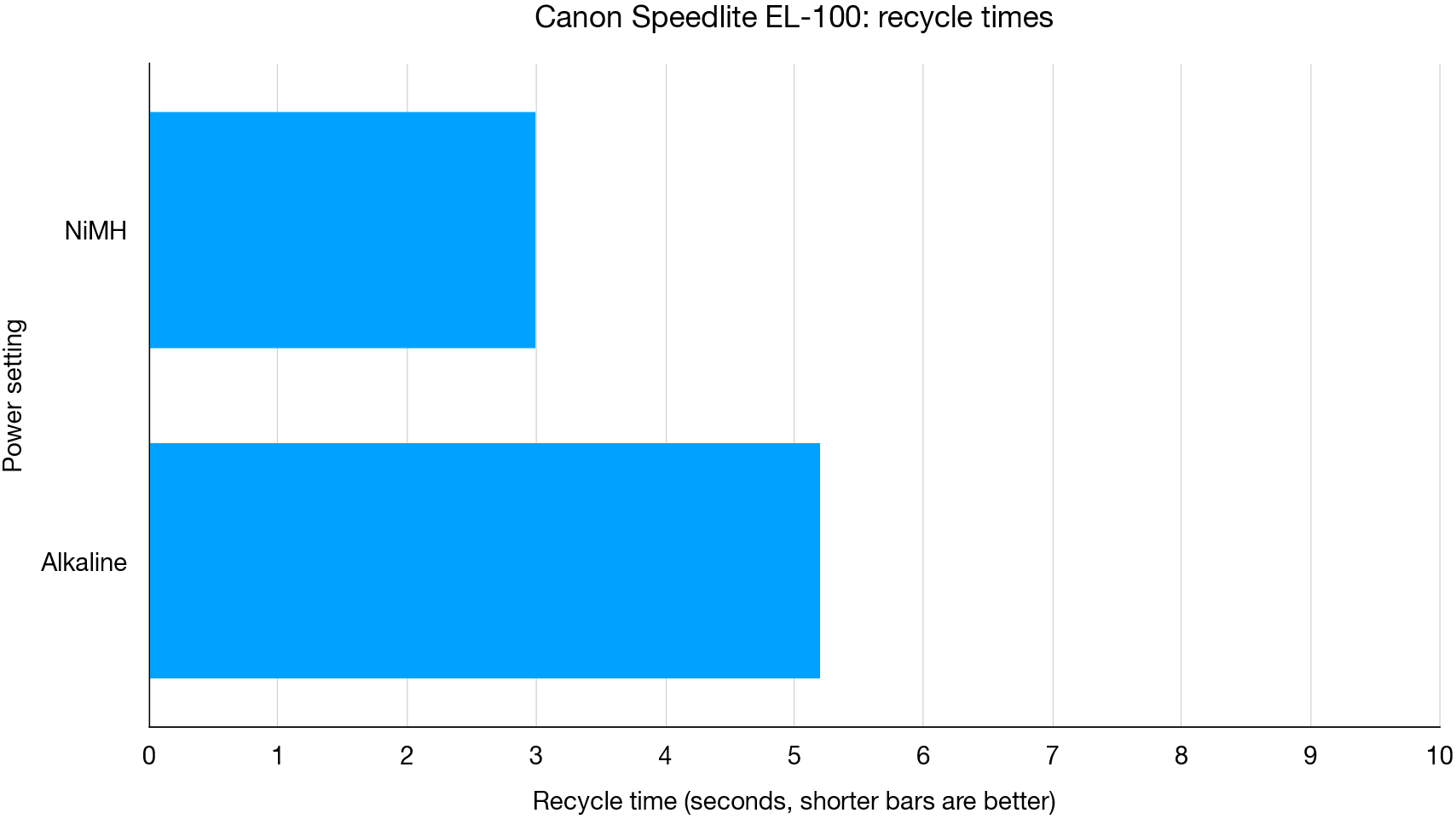
Recycling speed after a full-power flash with NiMH batteries is about the same as from the up-market Canon Speedlite 600EX II-RT, although the latter is much more powerful and doesn’t slow down as much when using alkaline batteries.
Verdict
When smaller is better, this Canon Speedlite is particularly travel friendly. It’s pretty basic, with very sparse onboard controls and no display screen, but upsides include a bounce and swivel head, optical master/slave modes for wireless triggering, and even a programmable stroboscopic flash mode, which is unusual for a camera manufacturer’s own-brand flashgun at this price point.
Read more:
• Best camera lenses to get
• Best Canon lenses
• Best Nikon lenses
• Best Sony lenses
Matthew Richards is a photographer and journalist who has spent years using and reviewing all manner of photo gear. He is Digital Camera World's principal lens reviewer – and has tested more primes and zooms than most people have had hot dinners!
His expertise with equipment doesn’t end there, though. He is also an encyclopedia when it comes to all manner of cameras, camera holsters and bags, flashguns, tripods and heads, printers, papers and inks, and just about anything imaging-related.
In an earlier life he was a broadcast engineer at the BBC, as well as a former editor of PC Guide.
